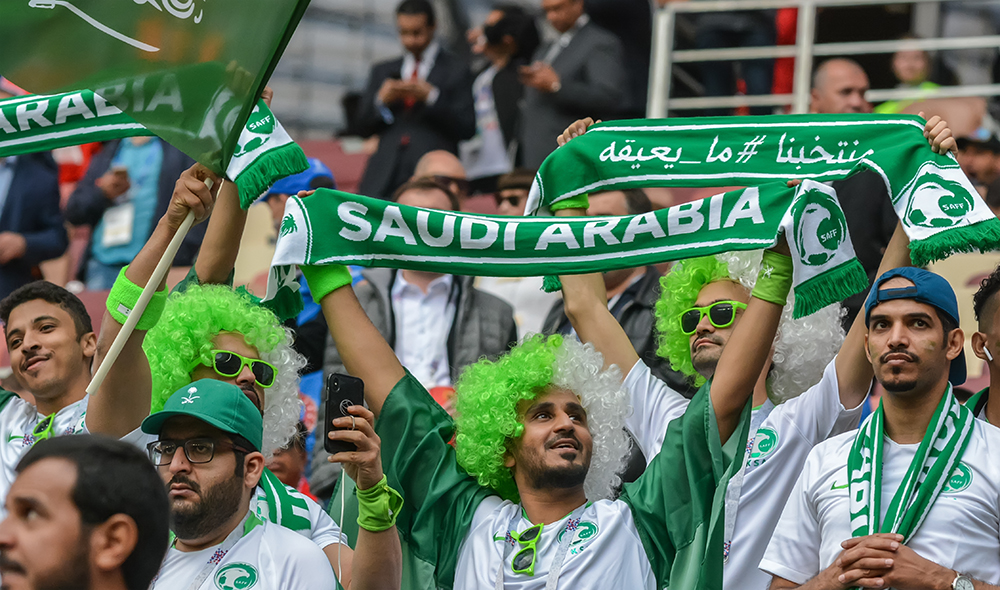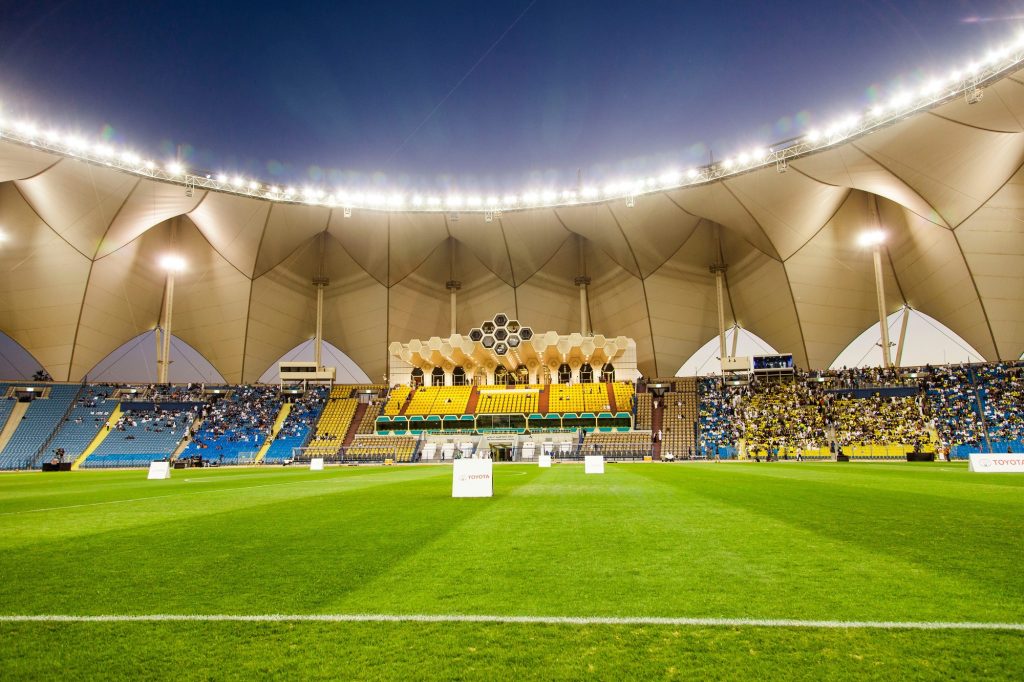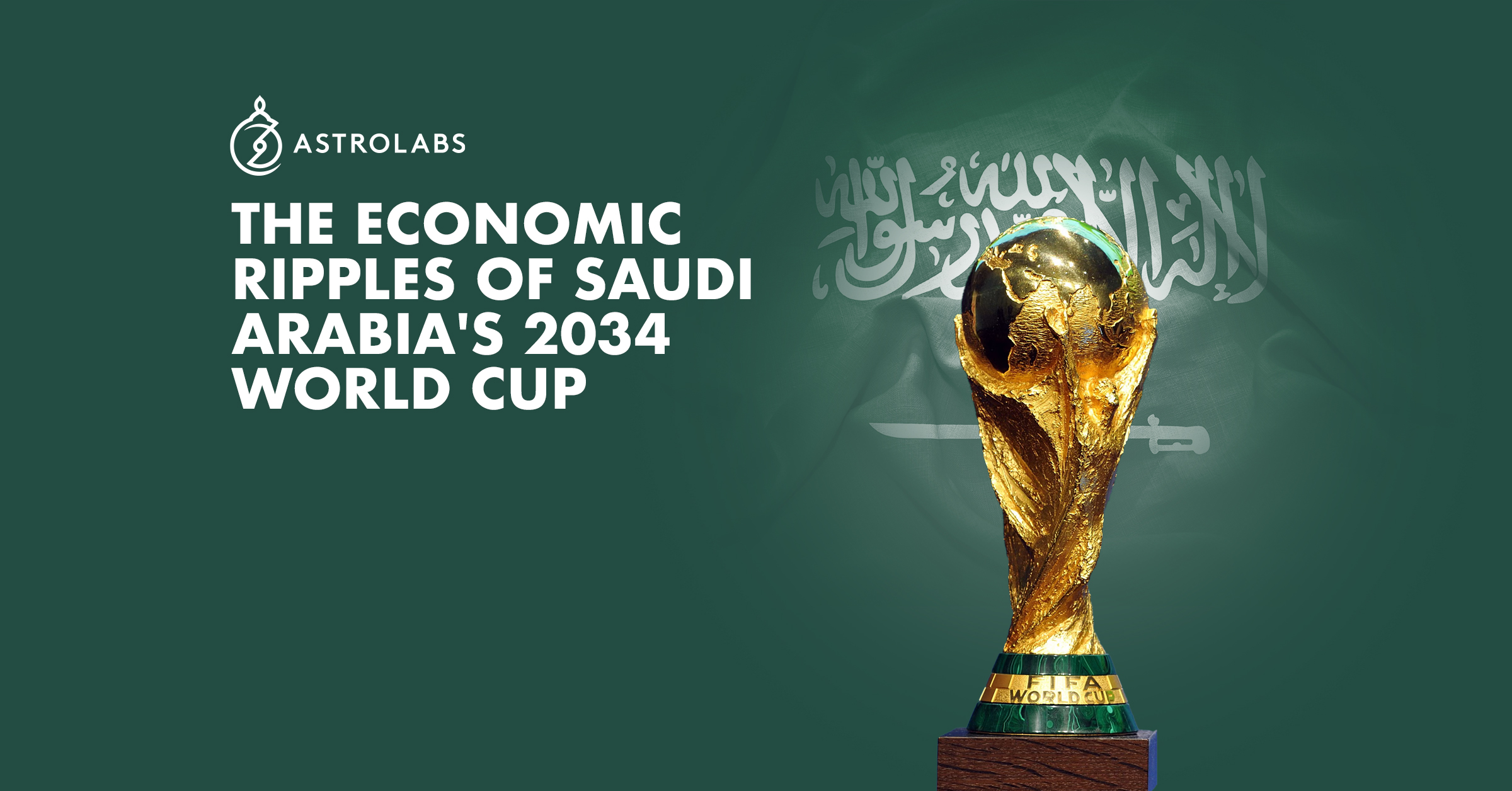Saudi is hosting the 2034 FIFA World Cup, and the news comes as no surprise – A Saudi World Cup is merely the pinnacle of a Saudi Vision 2030, a natural next chapter in Saudi’s milestones of growth and global integration. Fueled by determination and passion, characteristic of the country and its people, this milestone is expected to be Saudi’s grand canvas unfolding on a global stage. With anticipation brewing, this World Cup will be beyond awaited—it’s destined to be a spectacle, no doubt.
Saudi Arabia has a strong football heritage; the three-time AFC Asian Cup winner, is also home to one of the strongest leagues in Asia, the Saudi Pro League (SPL). Saudi’s Al Hilal is the most title-winning club in Asia, earning it the title of the “Asian Club of the Century’’.
The Saudi Arabian Football Federation (SAFF) President, Yasser Al Misehal, perfectly expressed the Kingdom’s sentiment stating, “Hosting a World Cup in Saudi Arabia would mean everything to us. We are a football nation, and this is what dreams are made of for all the generations, young and old, boys and girls.’’
An Economic Cornerstone for Saudi Arabia’s Vision 2030
The historical narrative of sporting mega-events as catalysts for social cohesion and nation-building is not new. The 1995 Rugby World Cup in South Africa is a testament to the power of sports in fostering unity and bolstering national pride – generating over $30.3 million in revenue, 70% more in comparison to the UK’s edition.
The staging of the 2034 World Cup in at least three key Saudi cities across 10 stadiums is a spatial representation of economic proliferation, each city a nucleus of growth and innovation.

In 2023 alone, Saudi Arabia hosted 50 international sports events, drawing over 2.5 million visitors and generating more than 70,000 job opportunities. This engagement extends to popular events like WWE and UFC, forming strategic alliances that aim to position Saudi Arabia as a prime destination for tourism and entertainment, beyond mere reputation boosting and track-record building. These events have not only elevated Saudi’s sports sector but have stimulated a financial influx through ticket sales, sponsorships, broadcasting rights, and merchandise sales.
The global spotlight on Saudi Arabia during the World Cup will beckon international and regional companies to broaden their horizons into the Kingdom, aligning with the Vision 2030 objectives to increase the private sector’s contribution from 40% to 65% and FDI’s contribution to GDP from 3.8% to 5.7%. The event will turn the Kingdom into a global business arena, with myriad opportunities for collaborations, partnerships, and economic engagements.
Uncovering the Saudi Canvas: A World Cup Reveal
The 2034 World Cup is Saudi Arabia’s open invite to the world into its rich cultural, and historical narrative. Saudi’s tourism sector is on a fast-track growth trajectory, with a whopping 378% increase in international tourist arrivals in 2022, translating to 16.6 million visitors. The World Cup will only amplify this allure, anticipating a surge of international spectators – referencing to the 3.4 million who graced the Qatar World Cup in 2022. As the global football zeal escalates, Saudi Arabia stands at the cusp of a tourism and economic peak.
The Public Investment Fund (PIF) is making big investments in sports, like $2 billion for LIV Golf and a $409 million stake in Newcastle United, to name a few. These investments aim to diversify the economy, and attract foreign investments. Hosting the annual Esports World Cup in Riyadh from 2024 is another step towards making Saudi Arabia a global esports hub, which will also boost tourism especially in summer.
On business tourism, the global eye is already on Saudi, with international businesses bridging the cultural gap and making notable inroads into the Kingdom. This trajectory is set to be significantly amplified with the anticipation of the 2034 World Cup. The Kingdom’s strategic goals include positioning itself on the global map, making it a familiar and more accessible ground for global entities, a venture that has been in motion well before the World Cup announcement this week. A notable example is the alliance between the Saudi Tourism Authority and Huawei Technologies to refine the tourism marketing engine and enhance visitor experiences. This synergy, already in play, is crafting smarter travel equipped with seamless navigation, language translation, and augmented reality-guided tours, essentially simplifying the Kingdom’s exploration for international tourists. Another, is REZLive, an Indian online booking agency, which expanded its services to Saudi in 2020 with AstroLabs. As the World Cup approaches, similar plans will come into a sharper focus.
Concrete Foundations: Saudi’s 2034 World Cup Build-Up
The 2034 World Cup will accelerate the construction boom in Saudi Arabia, with major projects like modern stadiums, upgraded metro systems, and expanded airport capacity underlining the nation’s infrastructural readiness for this global event. The sector, already the second-largest non-oil industry, with over 5,200 projects, is set to thrive – these projects, amounting to $819bn, represent 35% of all active GCC projects today. Aided by a government pledge of over 1 trillion riyals ($266 billion) for the next decade and the upcoming 2034 World Cup.

World Cups are always a magnet for global construction firms, with the promise of lucrative contracts and the prestige of being associated with iconic infrastructural projects. The building of Dammam Stadium and upgrades to other venues like the Prince Faisal bin Fahad Stadium show the ongoing big changes in infrastructure. The interplay between the 2027 Asian Cup and the 2034 World Cup creates a timeline of infrastructural and economic milestones, each an integral chapter of the Vision 2030 narrative.
Flagship projects like the NEOM megacity, Diriyah Gate, the Red Sea Projects, Downtown projects, and the Qiddiya entertainment complex, are a grand machine propelling Saudi Arabia towards a modern, diversified economy – ready to host an event of the caliber of a World Cup. Grankraft, another one of the companies that AstroLabs expanded to Saudi is working on the Red Sea island to build key stainless steel materials for the hyper-luxury resort, Sheybarah Hotel.
Riyadh, backed by a trillion-dollar investment, aims to globally reposition Saudi Arabia – starting with the transformation of its King Khalid International into the King Salman International, projected to accommodate 120 million passengers annually by 2030. This expansion, increasing the airport’s capacity by 380%, is a testament to the nation’s readiness to host a flux of tourists, particularly during the World Cup. The new airport, destined to be among the globe’s largest, is foreseen to contribute an additional $7.18 billion annually to the Kingdom’s non-oil GDP. In this decade, King Salman International could arguably be one of the most iconic projects in the market, and global companies vying for a slice of the construction pie will also foster a competitive landscape, ensuring the delivery of state-of-the-art facilities.
Naturally, the World Cup hosting also brings to light the technological advancements in the construction sector. Construction Tech (ConTech) will be in the spotlight, facilitating efficient, sustainable, and timely completion of projects. From Building Information Modeling (BIM) to modular construction and 3D printing, ConTech will be instrumental in navigating the complex landscape of mega-construction projects, ensuring the World Cup’s infrastructural backbone is robust and ready.
This international collaboration is set to elevate Saudi’s construction industry to new heights. As stadiums start to appear, the Kingdom’s reputation in the world will also continue to solidify – telling a story of big dreams, passion, teamwork, and a country ready to build the future.

